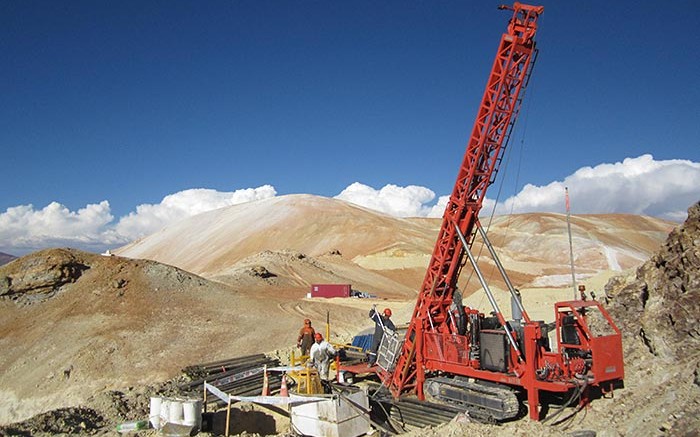The downturn in the mining industry isn’t generating many good news stories these days, but one exception is the promise of untold riches from an undeveloped high-grade gold deposit in the Chilean Andes.
Gold Fields’ (NYSE: GFI) Salares Norte there could soon join the ranks of the world’s best undeveloped gold deposits — perhaps one day rivalling Chile’s legendary El Indio mine, which between 1981 and 2002 produced 4.5 million oz. gold at 8.33 grams gold per tonne, along with 25 million oz. silver and 472,000 tonnes of copper.
During a presentation in February at the BMO conference in Florida, Gold Fields CEO Nick Holland noted that Salares Norte is “probably the only project that we’ve retained from the greenfields’ portfolio that has graduated to an advanced drilling project.
“This is something that’s quite exciting, because it’s high grade,” he said. “It’s fairly shallow. It’s still some ways off, but one to watch for in the future.”
The company’s US$23.5-million exploration budget this year for Salares Norte is funding infill and step-out drilling on the high-grade part of the main orebody, as well as resource delineation drilling at Agua Amarga, an extension contiguous to the main mineralized zone.
So far Salares Norte has an inferred resource of 23.3 million tonnes grading 4.15 grams gold per tonne and 44.8 grams silver per tonne, for 3.1 million contained oz. gold and 33.6 million oz. silver.
Gold Fields found the mineralization through reverse-circulation drilling in March 2011, and owns 100% of the project.
During his presentation, Holland estimated that if the company could convert all of the inferred resource that it has now into reserves, it could meet the company’s internal hurdle rate.
“We’ve got a 3.5 million oz. inferred resource,” he said. “That would probably translate into possibly an eight- or nine-year life. That’s probably enough, and if there’s upside beyond that, then that would give us more incentive.”
But the mining executive also said he was not going to “rush” it.
“We’re going to drill this out properly, and we’re going to make sure we really understand — not just what we have and that we can join the dots between the high-grade sections, but how big this could be.”
Depending on the success of this year’s 40,000-metre drill program, Holland said the project could move into a prefeasibility study later in the year.
“We really want to understand what we’ve got here, and then we’ll decide: ‘Do we start small, do we start medium or do we start bigger?’ It’ll give us all of the information to make a better-informed decision.”
Salares Norte is in northern Chile’s Atacama region and the northern part of the Maricunga belt, which holds a lot of Cenozoic volcanic rocks made from eroded strato-volcanos, volcanic domes and pyroclastic rocks.
Mineralization is contained in a high-sulphidation epithermal system, hosted mainly by breccia. Most of the known mineralization is oxidized, and the sulphide mineralization contains mainly pyrite.
The company notes that preliminary metallurgical tests on oxidized samples have shown extraction in the order of 90%, using conventional carbon-in-leach.
In January 2014 Chilean authorities approved an environmental-impact declaration for the next exploration phase, and Gold Fields drilled 8,223 metres (at a cost of US$8.21 million), and completed a scoping study.
Sven Lunsche, Gold Fields’ vice-president of corporate affairs, told The Northern Miner via email that “the next public resource declaration will not appear until early 2016,” at which point the company will disclose the next steps for the project. “Until then, we have no plans to provide further updates, though our CEO may give a brief progress report at the Denver Gold Forum.”


Be the first to comment on "Gold Fields spending US$24M exploring Salares Norte this year"